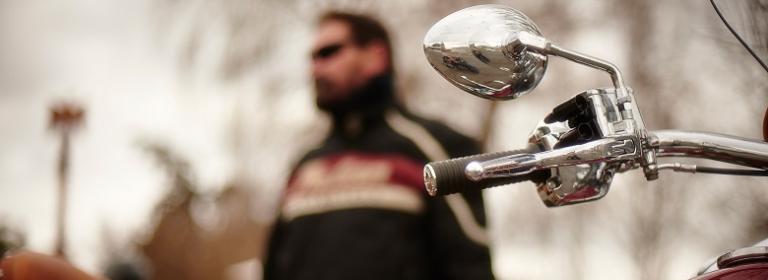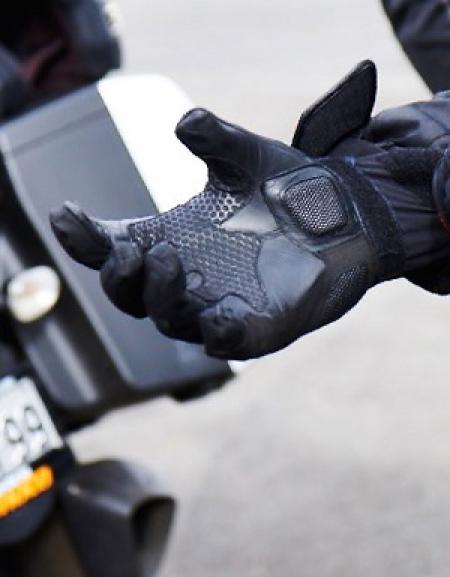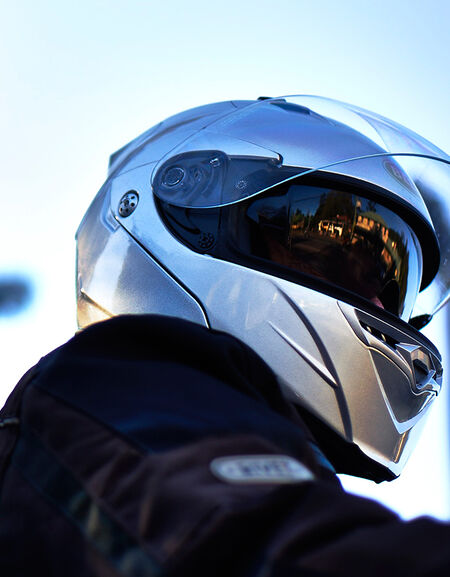
Material
Abrasion-resistant materials help riders avoid cuts, gravel rash and friction burns from contact with the road. They also protect against skin and muscle damage, as well as possible medical complications from infections.
MotoCAP tests clothing materials for abrasion resistance, allowing you to compare the performance of gear before buying.
Impact Protectors
Impact protectors, or body armour, help absorb and spread the impact of a direct blow. They can prevent or reduce the severity of fractures and joint damage.
Impact protectors must remain securely in place to work effectively. Try the gear on to check that protectors remain securely positioned over your shoulders, elbows, hips and knees.
Some gear may have foam fillers in the impact protector pouches. Unless they are labelled EN 1621-1, other items may not provide injury protection. If the gear is otherwise suitable, replace the fillers with high quality (EN 1621-1) impact protectors, which can be bought separately.
MotoCAP tests impact protectors for energy absorption and positioning.
Stitching
Ensure that all major seams have two or three lines of stitching, which prevents seams bursting on impact. There should be at least one line of concealed stitches on all exposed seams to prevent failure when the gear skids across the road surface. Seams that split or burst are a common failure in motorcycle gear.
MotoCAP tests seams for burst strength.
Zips fasteners and decorations
Avoid gear that has zips in exposed areas of the body, such as the outer sides of arms, which have high impact risks in crashes.
All zips and fasteners should be covered with flaps on both sides to prevent skin damage on impact. Flaps also protect the fasteners from being torn open on contact with the road or a vehicle.
Avoid any unnecessary pockets or hard decorations such as zips, fasteners or studs, which can cause penetrating injuries, be potential tear points or become snagged in a crash.
Comfort
To avoid fatigue and distraction, it is important to ensure that clothing remains comfortable for the duration of your ride.
Clothing fit
Try the gear on with the clothing you would normally wear while riding. Check that it is snug and comfortable in your normal riding position. Loose clothing may flap when you ride, become a distraction and leave you feeling cold.
Stay warm
Riders who feel cold may become less alert, with slower reaction times and the risk of making poor decisions may increase. Use insulated and windproof materials to help maintain your body temperature and protect you from the cold.
Keep dry
Good waterproof gear should be breathable to allow for perspiration, while preventing rain from getting in. Wet or damp clothing can be uncomfortable, cause distraction and will draw body heat away from your skin. MotoCAP tests clothing advertised as water resistant, allowing you to compare the level of water protection.
Even in warm weather, if gear is not breathable, you may feel chilled as your clothing becomes damp from perspiration, drawing heat from your body. Although gear made from PVC or plasticised nylon are waterproof and protect you from the rain, they do not breathe and do not allow perspiration to evaporate.
Don't overheat
It’s important to find comfortable gear to wear in warm weather, but riding unprotected is a poor choice, increasing your risk of dehydration, sunburn, windburn and serious injuries in a crash. Choose garments with ventilation points in the chest area, the back area, or preferably both. Avoid garments with ventilation points on the arms, especially around the elbows and shoulders, as they increase the risk of failure on impact with the road, leading to abrasions.
Well ventilated clothing allows the wind to flow through to dry perspiration and cool you down efficiently. Light-coloured or reflective clothing also helps to deflect rather than absorb heat.
In warm weather make sure you drink plenty of water to replace what you lose through sweat.
MotoCAP tests clothing for thermal comfort.
Coverage
Motorcycle gear is most effective when your whole body is covered. To maximise protection, cover your entire body by wearing protective pants, jacket, gloves, boots and a helmet.
Choose the right gear for your ride
Compare safety and comfort ratings




